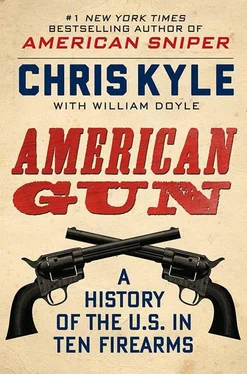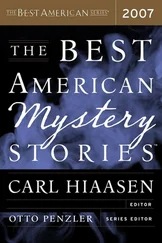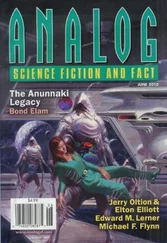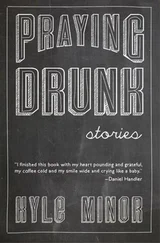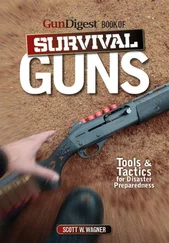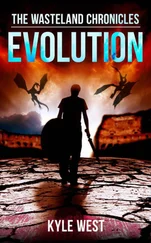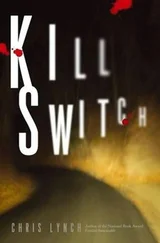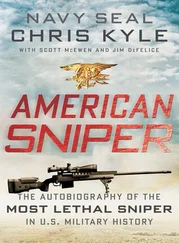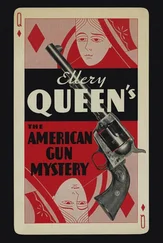The era of the gunfighter soon died off, but their weapons, most especially the Colt Single-Action Army, endures to this day. Prized by historians and collectors for its simplicity, power, and beautiful design, it is truly an American classic.
Colt revolvers had been instrumental in opening up the American West. Still, the region remained dangerous, largely unconquered land through much of the late nineteenth century.
To finally “win” the West, the United States needed an even bigger gun. As it happened, that weapon made its debut the same year the Colt Single-Action Army did.
4
THE WINCHESTER 1873 RIFLE

“The Winchester stocked and sighted to suit myself is by all odds the best weapon I ever had, and I now use it almost exclusively.”
—Theodore Roosevelt,
Hunting Trips of a Ranchman
On the morning of October 5, 1892, two hardware stores in Coffeyville, Kansas, conducted the first and maybe only mass gun giveaway in the history of the United States.
Any adult was free to grab a firearm and a couple of boxes of ammo off the shelf, no paperwork or money required. Word spread in a lightning flash, drawing a crowd of people who reached behind the counters and helped themselves to rifles and shotguns. The big prizes were the lever-action Winchester rifles, elegant weapons that had proven themselves both dependable and deadly since their introduction some nineteen years before.
This wasn’t a sales promotion. In fact, the reason for the giveaway was clear to anyone brave enough to peek in the window next door: The bank was being robbed. Actually, two banks were being taken simultaneously. Five fully armed men were pointing their guns at terrified bank customers and employees inside the First National Bank and the Condon Bank, both right in the middle of town. The infamous Dalton Gang had come to town for an unauthorized withdrawal.
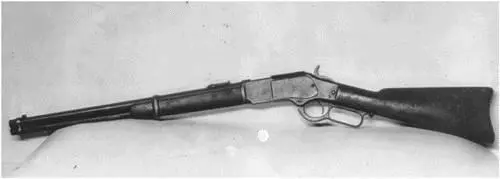
Jesse James’s Winchester.
Library of Congress
The Dalton Gang was on a bit of a roll. They’d just pulled off a string of successful train robberies in Indian Territory, robbin’, thievin’, and killin’ at a pace few had matched before. Not content to rest on their laurels, they had decided to top themselves with a brazen stunt in their old hometown—take two banks at the same time in broad daylight. As far as they knew, it had never been done. And that was the main point—cement their cred as the baddest crew of cutthroat thieves who’d ever ridden in the West.
Emmett, Bob, and Gratton “Grat” Dalton were related to members of the James-Younger Gang (led by Frank and Jesse James), which partly explained their competitiveness. A little harder to explain was the fact that both Bob and Grat were former lawmen. Their older brother Frank, a deputy U.S. marshal, was killed in the line of duty by a horse thief. But in the West allegiances shifted fast. Frustrated by irregular pay, the Dalton boys decided to apply their talents to crime.
The C.M. Condon Bank was located at the center of the town plaza, a wide, open space in the middle of Coffeyville. The First National Bank was across the way. The Daltons had fixed on a particular strategic point as the lynchpin of their plan—a hitching post next to the First National where they could park their horses for a convenient getaway.
What they hadn’t counted on was something that was becoming as American as, well, Winchesters and apple pie—road repairs. When the five desperados rode into town, they found the hitching post had been removed. This led them to leave their horses in a side alley several hundred feet away from their targets. More importantly, it complicated their escape route, hemming them into a spot where they could be easily ambushed.
They were a bit too full of themselves to think of that when they tied up their horses. Wearing fake beards and wigs, they strode across the town plaza, focused on their mission. The disguises were meant to keep anyone who saw them from realizing who they were and what they were up to. That didn’t work. A shopkeeper sweeping his sidewalk looked up as they passed, realized something was up, and discreetly trailed them as they split up and entered the banks.
I suspect the rifles they were packin’ gave them away.
“God damn you! Hold up your hands!” ordered Grat Dalton as he pointed his Winchester inside Condon Bank. With his confederates Bill Power and Dick Broadwell spreading out behind him, Grat told bank employees to fill up a grain sack with cash and silver dollars. Then he went over to the main vault and told one of the bankers to open the inner doors.
Which prompted bank cashier Charles Ball to utter the most famous lie in the Old West.
“It’s not time for that to open,” he told the outlaw, explaining that the burglarproof money chest was on a time lock that wouldn’t open for ten minutes. Another employee helpfully turned the handle, but did not pull it.
Time locks had been around in the West for a while, and Grat was familiar enough with them to recognize that the contraption on the door was indeed such a lock. What he didn’t know was that it had gone off earlier that morning; if he’d’ve simply pulled the handle himself, it would have swung open free and easy. But he fell for the bluff.
“We can wait ten minutes,” he announced.
But patience wasn’t his strong suit. Soon he began to fidget, then stalk back and forth. Finally he exploded. “God damn you! I believe you are lying to me. I’ve a mind to put a bullet through you! Open it up or I will shoot you!”
Ball stuck to his story.
“Where is your gold?” demanded Grat finally.
“We haven’t any,” said the banker. Ball then evaded Grat’s questioning with a stream of unintelligible banking lingo, explaining why this was the case.
Meanwhile, inside the First National Bank around the corner, Bob and Emmett Dalton were also being bluffed by bank employees, including one who insisted he didn’t know the combination to the safe. Finally deciding that time was wastin’, they filled up a bag with what they could find from the teller stations and patrons. This wasn’t chicken feed: a total of twenty thousand dollars went into the sacks. But the Daltons felt like they’d been gypped anyway. Swearing and shouting, they took three civilians hostage as human shields, and moved to the door.
The delay at both banks had been long enough for the good citizens of Coffeyville to arm themselves, courtesy of the gun dealers at the hardware stores. The decision to go to war against the Daltons seems to have been spontaneous, but sometimes spur of the moment is the best way to do things. Volunteers sprinted to the scene from all over town, many of them gathering at Isham Brothers hardware store, right next to the First National Bank. The staff at Isham’s, along with their rivals at A. P. Boswell’s hardware store a short distance away, gave guns and ammo away to all comers as fast as they could grab them from the display.
The civilian gunmen scrambled into positions around the two banks. Several men hauled wagons together to create cover. One store owner grabbed a Colt .44 from his basement and ducked behind a wooden sign. A wagon driver pulled a double-barreled shotgun off the shelf at Isham’s and hid behind a post that gave him a point-blank view of the First National Bank. The proprietor of Isham’s ducked behind a big iron stove in the front of the store, backed up by two of his clerks, one with a revolver and the other with a Winchester.
Читать дальше
